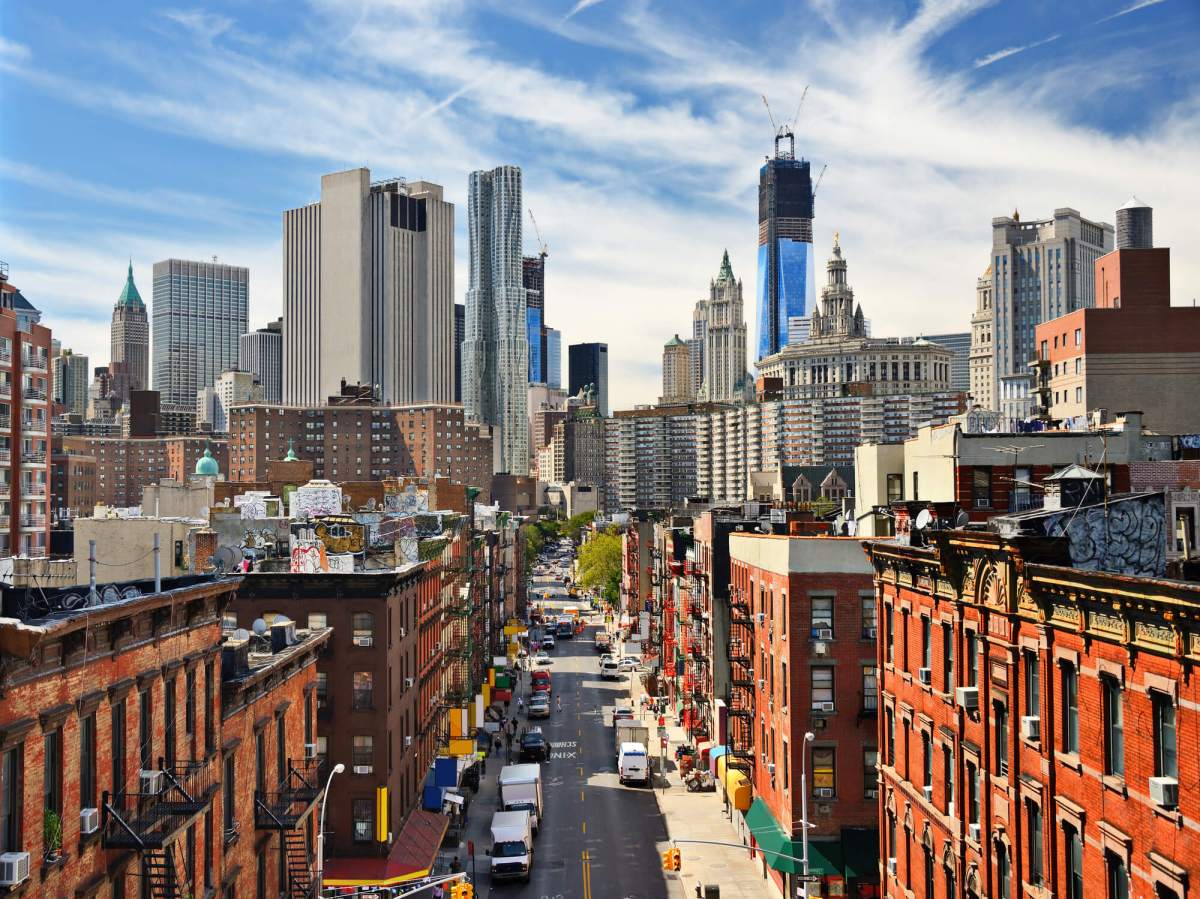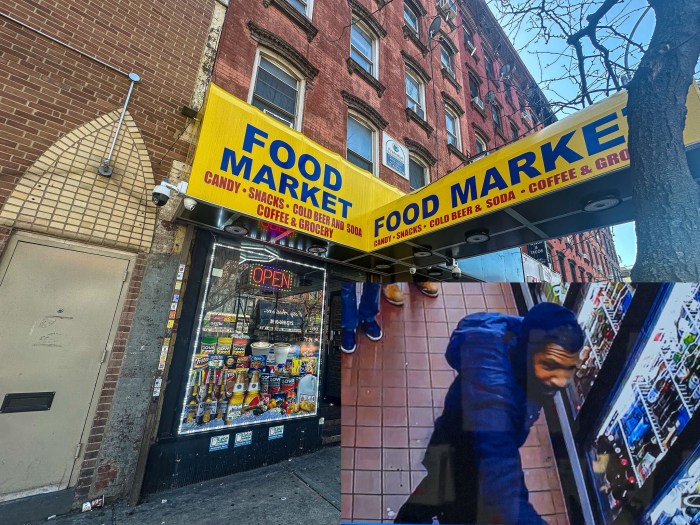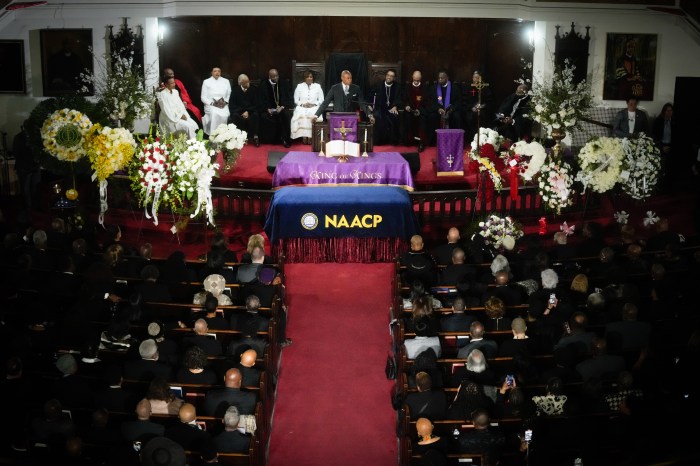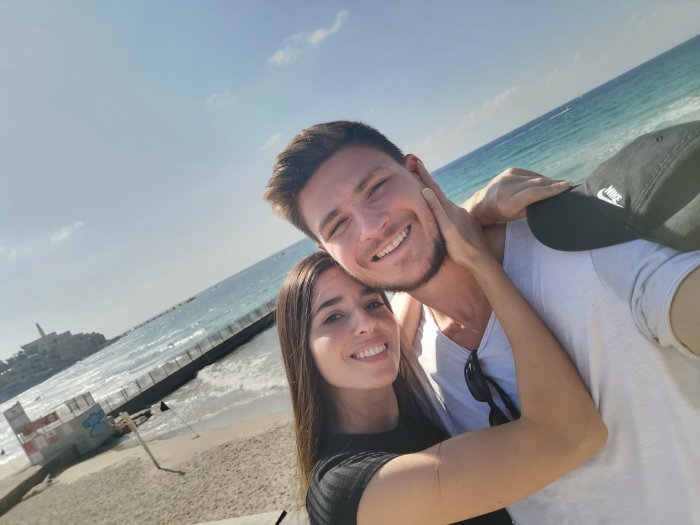As the real estate market continues to recover from the pandemic and luxury sales increase, prices are starting to rise. The price growth is driven by new fall inventory and an uptick in luxury sales.
“We will see prices slowly but surely go up,” said Scott Savory, a New York Licensed Associate Real Estate Broker with Compass.
People should be motivated to buy now while mortgage rates are still low, said Savory who is part of the StreetEasy experts program that allows buyers to work with partner agents for free to navigate the home buying process. There are no signals in the market indicating it will collapse or correct anytime soon. Demand is outpacing supply, so people should think about purchasing now versus later, he said.
“I think we’re going to see more listings come to market in the fall, and I think the market will resume its normal state which is a slow rise,” Savory said. Adding, “As fall inventory comes to market, buyers will see the market rise even more as buyers will have new inventory and listings to engage with.”
Affordability and availability for first-time buyers
But the economy is still recovering from the pandemic, so, for now, mortgage rates are still near record lows, prices are stable and homes are available, which has been a really good opportunity for buyers to come onto the market recently, said StreetEasy economist Nancy Wu.
In StreetEasy’s annual study to find the neighborhoods with the most homes accessible to first-time buyers post pandemic, Sheepshead Bay was ranked the number one best neighborhood for first time home buyers by SteetEasy. Sheepshead Bay had 330 apartments on the market between June and August of this year that fell within StreetEasy’s affordable monthly spending range of $2,346.
In their study, StreetEasy looked at the absolute number of affordable listings in a given area, out of all sale listings between June and August 2021, that would be affordable to New Yorkers between the ages 25 to 44 who earn the city’s median annual income of $70,406. Most first time buyers are millennials, and the typical new buyer is 37.
StreeEasy’s definition of “affordable” factored in a 20% down payment, as well as the costs of maintenance, taxes, and common charges. StreetEasy arrived at a maximum monthly outlay of $2,346. The median asking price of all the homes StreetEasy considered affordable in the top 10 neighborhoods was $352,780.
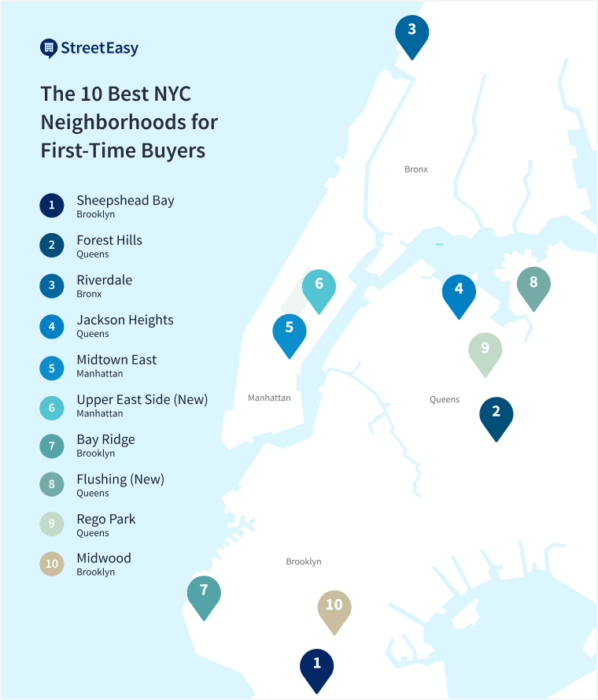
Savory said he agrees with the neighborhoods StreetEasy found as accessible for first-time home buyers, but there are also other areas to consider.
He said Flatbush, Prospect Lefferts, Windsor Terrace, Kensington, Ditmas Park, Redhook, Midtown West, Harlem, Rego Park and Rockaway Beach are all booming areas that are still affordable compared to other neighborhoods. Aaron Seawood, a New York licensed associate real estate broker and member of the StreetEasy experts program, said Cypress Hills, Flatland, Inwood, Manhattan and Sunnyside, Queens are areas to consider as well.
“I am seeing buyers come to Prospect, Flatbush, East Flatbush because it’s close to the Q line, which is a 30 min express train to Manhattan, and close to the park,” Savory said.
The entire ‘u’ shape on the bottom of the West, South and East side of Prospect park which includes Prospect Park South and Windsor Terrace are blowing up in investment as they are some of the last neighborhoods with value boarding Prospect Park. People are able to get more space for less in these areas, he said.
“And that lends to the conversation of covid and people wanting space,” Savory said. “People are wanting to live closer to the park to enjoy relaxation and space because they’re spending so much time inside due to the pandemic,” Savory said.
In these neighborhoods, it often makes more financial sense to buy instead of rent, Savory said.
He also recommended the Rockaways as a decently priced area with lots of space. He said the area has single and two family homes that are still priced “very well” especially for someone who wants a beach or vacation home while still being in New York.
“This reflects a neighborhood that is serving a different purpose other than commuting to the city for work.” As some continue to work remote amid the pandemic, living farther away from the city to have more space is the direction some families choose.
There are also neighborhoods in the center of the city that do offer affordable options but cater to a different style of living.
“Maybe a lot of first time home buyers, on a budget, are only considering certain parts of the city, but, in reality, there are some surprising neighborhoods that people might not have considered before, like Midtown East and the Upper East Side,” Wu said.
Midtown East and the Upper East Side were two surprising Manhattan neighborhoods that made StreetEasy’s list. The Upper East Side gained more inventory in 2021, meaning more affordable homes were listed in the area. But many of the lower-priced units in these areas were co-ops.
Midtown East and the Upper East side are two of the largest neighborhoods in New York City, so there were more listings- 3,550 in July 2021. 322 of those listings were determined possible homes for average-earning shoppers, according to Street Easy’s data.
“Midtown East has always been a value play because the housing stock there is so generic,” Seawood said. There are a lot of older buildings and not a lot of new development.
While the Manhattan price sales market has been recovering month after month for the past two or three months, that price growth is not happening in the Upper East side yet, helping to make it more affordable right now, Wu said.
In the Upper East Side, the value is East of Third Avenue, far from Central Park, from 90th Street and up, but value is also relative to size and the type of building, Seawood said.
First-time home buyers who want a place to stay for five to 10 years can find good deals that would be more affordable than renting, especially as rents are starting to tick up again as the market recovers from the pandemic, Wu said.
Buyers and bargaining power
As the market has started to recover, buyers have lost their bargaining power and buying a house for a steal is in the past.
“Everyone tries to time the bottom of the market, and the data is showing us that that’s clearly past and it’s better to catch it on the way up as it continues to rise,” Savory said. He pointed to the 2008 housing market crash and how in the years following, prices rose.
Ten years ago, a brownstone in Bed-Stuy was 600,000. Now, homes in the neighborhood are selling for 2 million dollars. Based on inflation, demand, development and the growth of this city, prices continue to rise always, Savory said. The market is cyclical, but today more and more people are considering owning versus renting, he said. Coming out of the pandemic, prices will likely continue to rise.
No one will really argue that, coming out of the pandemic, there are maybe still some opportunities here or there, said Seawood.
“But not like it was when we were knee deep in it (the pandemic) and people were bailing out of the city and it felt like New York was on fire,” Seawood said.
Buyers had more bargaining power when the market first reopened around February of 2021 because there was a lot of inventory, development was slow, luxury listings were slow and there was fear and uncertainty in the market around where the housing market was going.
“That changed very quickly over the spring and summer of this year because buyers really raced back into the market and very quickly we started to hit prices that we were seeing before [the pandemic] and that bargaining power of ‘oh we don’t know where the market is going to go or you’re competing with all this inventory’ went out the window,” Savory said.
Out-of-towners are moving in
Prices will also continue to rise not only as people move back into the city but as people move to the city.
“I’ve been running into a lot of people from San Fran and California who have been moving to New York and have been saying this is a better transition because their market is falling, especially their rental market, and that big city individual is coming to NYC,” Savory said. “As buyers move to New York with bigger pockets that might push our base level pricing upward which pushes the entire market upward.”
According to StretEasy’s August 2021 Market Report, an uptick in luxury sales is causing price growth in New York City. The median asking price in Manhattan was the highest it’s been since June of 2020, reaching $1,425,000.
Homes valued within the top 20% of properties on the local market, or luxury homes, saw a year-over-year price increase of 2%. In all other price tiers, prices dropped or stayed the same.
Rents rose the fastest for the most expensive apartments, and the ones with the most amenities. But rental inventory is the lowest it’s been since April of 2020 with only 18,569 Manhattan rentals available in August.
“New York City has never been known for affordability, but for buyers who are on a budget, there are neighborhoods where you can find a lot of options that will fall within the budget,” Wu said.



